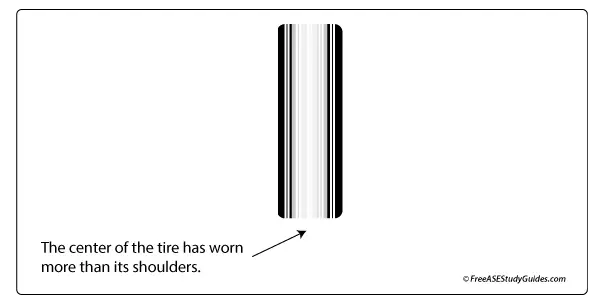ASE G1 Maintenance & Lt. Repair Practice Test
26. There is white-colored exhaust emitting from a vehicle's tailpipe. Which of these could be the cause?
- A. It has worn piston rings.
- B. It has a leaking head gasket.
- C. It has worn valve seals.
- D. It has a leaking fuel injector.
27. An automatic transmission's fluid is pink and milky. Technician A says this is the result of engine overheating. Technician B says the transmission may be overfilled, and the fluid has become aerated. Who is correct?
- A. Technician A
- B. Technician B
- C. Both A and B
- D. Neither A or B
28. Technician A says fuel filters have an arrow that always points toward the fuel tank. Technician B says a clogged fuel filter will reduce fuel pressure at the fuel rail. Who is correct?
- A. Technician A
- B. Technician B
- C. Both A and B
- D. Neither A or B

29. Which of the following is true about the tire in the illustration?
- A. It is underinflated.
- B. It is overinflated.
- C. There is too much camber.
- D. The coil spring on that wheel is weak.
30. A vehicle with power assist brakes has a hard brake pedal with little stopping power. Which of these is MOST likely causing this condition?
- A. The brake booster.
- B. The master cylinder.
- C. Air in the system.
- D. Contaminated brake fluid.